Photo: Matt Black by Kava Gorna.
Filmmaker Matt Black seamlessly intertwines art, film and fashion for projects that combine elements of curation, environmental design, photography, and filmmaking. Matt is the creative mind behind REFLECTIONS, an insightful series of films focusing on art world luminaries produced for the award winning cultural website, NOWNESS. The series, which has profiled Jeff Koons, Damien Hirst, and Takashi Murakami, among many others, captures the vision and inspiration of each globally renowned artist and immerses us in their singular world. In 2017, Matt released a book with our friends ASSOULINE inspired by his acclaimed series, “Reflections: in conversation with today’s artists”. Other project highlights include Matt’s creation of documentary- style films with brands such as Levi’s, Mercedes-Benz, NARS, Louis Vuitton and Mini, and direction of short films commissioned by Gagosian Gallery, The Guggenheim Museum, and Tribeca film festival. He recently launched STUDIO(S) on M2M TV, an original documentary series exploring the creative process through those who shape and define modern culture, such as David Adjaye, Thomas Houseago, Glen Luchford, and Gaia Repossi. The second season will be released in May 2018. Matt currently lives in New York.
Florian DAVID: Hello Matt. You are in New York today. I am interested to know about the very first thing that you said after waking up and getting up this morning? What were your very first words, do you remember?
Matt BLACK: I must have asked my wife who was going to pick up our baby who was calling for us next door [laughs].
DAVID: What’s his name?
BLACK: Ulysses!
DAVID: What was then the first thing that you read this morning? The first words that you were exposed to?
BLACK: Unfortunately, it was the news on my phone. I think it was the Guardian.
DAVID: What were the news?
BLACK: Some bad news I’m pretty sure…
DAVID: Obviously. This is why now I keep posted with the so-called ‘news’ only once a week.
BLACK: Yes, every day I say to myself that I am not going to look at the news. And that I will not be shocked when I look at it. And every day I look at it! And I wonder if I am really being shocked anymore. I always try to read a variety of media and pay attention to the way the same story gets covered by different outlets, always fascinating to observe the huge disparities.
DAVID: You were born in Paris, how long have you been living in New York?
BLACK: I have been living and working here almost twenty years now, I am based here full time.
DAVID: Reading through your latest book ‘REFLECTIONS’ [Published by ASSOULINE], it is clear that America holds a big place in your heart can you tell us why?
"Initially I had more of a street approach to this project,
I was interested in graffiti-based works first, and the project organically evolved towards fine art.
But again the genesis of the project was documenting this interesting community downtown,
artists of my generation, doing interesting stuff!"
BLACK: Well, there are going two different parts in my response. I live in New York, and as you know it’s a bubble within America. New York it is a very cosmopolitan place. All the people I have in my life, the people I work with, my friends and the people I cross in the street come from different places in the world. And really this is why I like New York. America is a big part of me because I grew up influenced by American pop-culture. But again New York is more like an island. Being a New Yorker isn’t synonymous with being an American. New York is really a city in a state of flux, going through cycles. It’s constantly changing you know. As far as why there are so many American artists in my book, it is simply because I made the book here, so it was really about access. As you know before being a book it was a film series, and I met these artists whenever they were coming here to my town. And really when the project started it was about capturing the New York Community. It started when I decided to interview people around me who were my friends. That’s how the project started. That’s how I interviewed Jose Parla that I met when I just arrived in New York, the same with Scott Campbell and with Kaws whom I both met soon after I arrived. I met them all very early on when I arrived in New York. And they went on to becoming big Artists. Initially I had more of a street approach to this project, I was interested in graffiti-based works first, and the project organically evolved towards fine art. But again the genesis of the project was documenting this interesting community downtown, artists of my generation, doing interesting stuff!
DAVID: How did you land into that circle of friends?
BLACK: At the time I was working for French Designer Agnes B in Paris. And when I decided to move to New York, they were keen on keeping working with me, and so they offered me a job in New York! When I was in Paris I was always part of the street team and the graffiti team and the tattoo team, all these things way before these things were deemed a popular art form - I am talking about the early 90s, so when I moved to New York I already had connections with people in that world, and Agnes too was into this supporting art and graffitis, so I worked with her and the company in New York on a couple projects with different people, and one of them was with this magazine, ‘Tokion’ (Originally from Japan, and who had recently opened an office in LA). In 1999 we decided to do this ‘Neo Graffiti Project’ in NY. We featured some important graffiti artists such as Futura, Haze, Phase 2… It was a success with acclaimed musician Major Force who came Djiing all the way from Tokyo, and our block party too was a big success. So we did something new, at a time when graffiti was not cool anymore. At that moment I met a lot of creative people who wanted to be part of that rebirth movement and friendships were born, I mean a lot of friendships, and some people went on to become commercially successful and famous and some others you never heard of them.
DAVID: Of course, you were not thinking in these terms you were actually just doing stuff and being passionate.
BLACK: Exactly! To put things back in context too, remember that we are talking about a time when there was no internet, it was very basic, it was taking ten minutes for a photo to download, there were no cell phones, no texts! It was no better or worse it was different. So years later when the digital world arose and gave me the possibility to make films and to edit, I thought I am going to use this and make movies. I had already been doing shorts, commercials, web-films, fashion films, yet this time I saw an opportunity to mix a couple passions of mine, one of which was moving image, another was art and another was the journalistic angle, capturing a moment in time you know? That’s it, this is what happened! [laughs].
DAVID: Do you remember your first creative act? Was it a piece of poetry, of film, of painting?
BLACK: I do, I grew up painting and making collages, and then when I was in my early teens I decided to do graffitis, which is creative and destructive at the same time. Making graffiti is really a weird passion. You are part of a very closed world, which at the same time is, itself, very opened onto the world. It is a very bizarre activity [Laughs].
DAVID: Why graffiti?
BLACK: I think like everyone, a lot of European kids started it because they ran into these two seminal books: ‘Spraycan Art’ (1987) and ‘Subway Art’ (1984), I know this for a fact [Two books by Henry Chalfant documenting the early history of New York City's graffiti movement]. Somehow we ran into these books. Then when you stumble into a graffiti in Paris, you start questioning the work, realizing this was started two generations before you, getting intrigued and then you realize there is a lifestyle behind it and it helps you forge an identity, and at the time none of us would have thought that twenty-five years later some of us would have made a career out of it, some would be world famous, and would still be doing it! No one would have ever bet that this was going to become such a huge thing, you know. I was reading recently a quote by acclaimed Dutch artist writer Shoe [Meulman]: ‘Graffiti is something that brings the real estate value of the neighborhood down and street art brings the value up!’
DAVID: How do you discover art?
BLACK: I go to galleries, which is a way to see full shows, emerging or established talents, small medium and large galleries. The new ones the old ones, whichever city I am in I check its local galleries, then its museums, also Foundations because they work on different scales like in Argentina. And I go to studios. I am privileged to have access to studios. People often tend to forget that there is someone behind the art that they see in a photo or on a wall. And sometimes I discover art through someone else’s recommendation, an artist who tells me ‘hey you should check my friend’s art’…The physical experience is totally different from the experience you have seeing an artwork on a screen; sometimes I am very surprised, I discover stuff that I love in the physical world that I thought I was not very keen on initially, and vice versa. Also my taste is changing. A painting that I could have liked in the past I do not like any more. Stuff I liked when I was 20 does not correspond to who I am anymore. And the world around us changes too…It is the same with movies. For instance, not that I have ever been obsessed but clearly I am not at all anymore into violent movies. Trailers are always full of gunshots and explosions, now I look at these and think ‘Really guys?’ [laughs]
DAVID: Do you remember the very first piece of art that made an impression on you? A moment you remember, when you discovered Art?
BLACK: I think it has to be a mix of things between things that I saw in books and things that I saw in reality. I am pretty sure that I saw pieces from Matisse and Picasso, Fernand Leger too. I remember seeing Picasso’s Guernica in Spain. I was aware this was an important piece. I remember knowing who Picasso was, what he looked like, I just don’t remember if I liked the painting or not. When you grow up in Paris you also see a lot of sculptures outside. But to go back to graffiti I was really lucky when I was ten years old to have my friend take me on a trip to New York City with my sister, and we took the subway and the subway was completely covered with graffiti! And that made a huge impression on me! I thought that this was very, very special. I didn't think this was ‘Art’ yet I thought this was cool and I immediately wanted to be part of that. I stumbled into that book I mentioned earlier at the MOMA, and I wanted to be in the bookstore while I had no interest being in the Museum where the grown-ups headed on their own! They left me inside the book-store, I do not know if this would be allowed today! [laughs].
DAVID: While reading your bio two funny coincidences struck me. One, the fact that you arrived in New York in 1998, which is also the year when I arrived in New York (I lived in New York for five years), and then the fact that our previous guest, Actor Benn Northover, works with Jonas Mekas (Anthology Film Archive) who happened to also be there in New York documenting your first show back in 1999 - and you still have that VHS tape! Is this something that you are paying attention to in your life, these coincidences, people crossing your path, the fact that we have been walking in each others’ footsteps? (I know for instance that this is a theme which very much fascinates another of our previous guests, Saskia de Brauw.)
BLACK: Absolutely! I met someone recently and after chatting for a bit we discovered that we had also moved to New York the same exact year, and that we might have also worked at the same exact place in London back in 1995. And there were many other coincidences like this! I do not know what it is, if it is about like-minded personalities making the same choices, there is something weird yes that I cannot explain, these moments where our lives intersect, as you said like in these movies by Claude Lelouch.
"They went for it, there was no turning back.
They felt that they did not have a choice.
They were going to be artists no matter what.
There was no ‘plan B’."
DAVID: I laughed a few times reading through REFLECTIONS. There is a moment when artist Dustin Yellin tells you about meeting his former fiancee’s father who claimed to be chased by the FBI who wanted to kill him because he had plans to produce free energy! [laughs]. And Dustin goes on to explain to you his life story and how at some point he had a choice between pursuing his studies or dropping out of school and making art. Do you remember such a personal ‘fork in the road’ moment as far as you are concerned?
BLACK: Not really. Look, ninety-nine percent of the artists, whom I interviewed, or whom I have met, have known a long time that this is what they would be doing - art. They had no other road than being an artist. And I really think this was the common thread between all the artists featured in my book. They went for it, there was no turning back. They felt that they did not have a choice. They were going to be artists no matter what. They were going to be artists. There was no ‘plan B’.
DAVID: For you what is art, what is not art?
BLACK: That is a big question. Art is creating something. But, for instance, I don’t think that fashion is art, or that architecture is art, because these things have a function. I think Art has no physical function. Its only role is to provoke feelings and to be inspiring. The function of art is emotion, sensation. Making you feel, react. As soon as there is a function, it might still be ‘creative’, but it's not art.
DAVID: Isn’t there a bigger social role for art to play? I am thinking of an artists like Rashid Johnson? I think that these artists, by telling their own stories can play a major role in the way they can help shift human consciousness, by sharing with the world the way they see life, what do you reckon?
BLACK: Absolutely, they have a social message. If you will, art can be function for the mind, certainly [smiles]. It can inspire people, it can rally people together. Art can be political, social, it can disturb.
"It is like skating on thin ice.
It is amazing and it is inspiring, yet you know that it can crack under your feet at any time."
DAVID: If you had to describe life in simple terms, using metaphors, how would you describe it? If you had to describe life to Ulysses when he turns five?
BLACK: Well, talking to a five year old and making him feel safe, good and optimistic about life is a different thing from describing life to him! [laughs]. We know that life is all and it's opposite! [laughs]. Well, I would say that it is comparable to crossing a lake, it is like skating on thin ice. It is amazing and it is inspiring, yet you know that it can crack under your feet at any time. Look, it is the same for an artist, all can go well for you and one day it just stops, you don’t have anything to say anymore even to yourself…And then comes a new cycle and you find renewed inspiration. Life is a long journey, we are just like human machines doing the best we can, trying to be good people, good to ourselves and to the people we love. Doing things that make us and the people around us happy. Making the best of it and enjoying it. It is both what you said earlier, a rollercoaster, and climbing peaks. Just keep moving! It goes super fast!
DAVID: When the ice cracks under your feet what does usually happen inside Matt Black’s head?
BLACK: Well I try to use my experience of life to put things in perspective. I think that if you are in a creative industry and you are passionate about what you do, you breathe and you look at the big picture of life: How lucky you are to be doing what you do, and you look at all the beautiful things that you have around you. Growing older I have changed, and the world has changed too. And frankly I knew nothing then and I still know nothing! [laughs]. The minute that you travel though, you start learning new things about life, so you need to do that, to put yourself in different places that allow you to see things from a different angle.
DAVID: I would like your help to debunk a misconception that I think most people have about artists. We often tend to portray artists as creative geniuses who let their creative juices flow freely and improvise, quite extrovert, original personalities. It struck me that most of the personalities you have had conversations with are quite introvert people, and are highly aware of their inner creative mechanisms. They know themselves pretty damn well!
BLACK: I’d say there is a mix of introverts and extroverts. Where I agree with you is on their level of awareness. They are very aware of what they are creating, they take their work very seriously. They are all successful and what I want to show young generations who want to become artists, is that they really need to work out, it is a lot of hard work! There is a lot of discipline about what they do. As you said, this ‘crazy artists’ thing is a total cliche! Especially in today’s world, where there is insane competition, an abundance of images, to succeed at this craft you need to sell your idea! You need to be very serious in your process at all levels in your life. You can surely decide to make paintings only for yourself, but if you want to reach a larger audience with your work, this does require a tremendous amount of personal commitment, and often to know how to surround yourself with the right team too.
DAVID: How did the connection with ASSOULINE happen, to turn your initial Series on Nowness into a book?
BLACK: Most of the book did come from my Nowness series but then there were also other pieces that I had done. The first reason came from a concern of mine, that film work left online could just vanish from one day to the next, you know? So I wanted to have these conversations in one place. And I have always loved books. I love moving image and I love books. But the exercise was totally different, all had to be re-thought and re-edited from a different angle. In the book I also became a part of the conversation whereas I was not appearing in the initial moving image versions, which means that in the book I am becoming the unifying character between all these conversations. I liked Martine [Assouline]’s vision of making this book a conversation between all these luminaries.
DAVID: How long from the first meeting to the release?
BLACK: Roughly a year from when we said ‘Go’ till the release, and it was a great experience! It is a lot of work, so you do books because you love books! [laughs]
DAVID: Is there one particular thing that was said to you over the course of these twenty-one conversations that shocked you or that is now obsessing you?
BLACK: What I take away is what these artists have in common. The fact that none of them had a plan B. And I saw that across the board, this was just striking. Their calling. When you know the chance of being a successful artist, the odds are so limited! And they are all so dedicated, they go to their studios every single day, they are committed to art, they breathe art. Robert Longo or Jeff Koons will travel to a country just to see the art of someone they love. They are very respectful of art, and passionate about what they do. These people are consumed by the idea of art all day long.
DAVID: Yes, this echoes what Balanchine asked of the dancers he was bringing on board, he did not want people who wanted to dance but people who had to dance right?
BLACK: Exactly!
DAVID: I really think that we are living great times for art. I like Rashid Johnson’s line, telling you that what his artwork on the wall is screaming is ‘Give Me Love’, because I think that this is what it ought to be all about today. What person has had the biggest influence on your life?
BLACK: That would have to be my parents. The more I think about it. The older you become the more you walk in their shoes and you understand the big influence they have had on you. What they passed onto me was an appreciation for culture - which is not just for the elite - and mostly a sense of curiosity, about people, subject matters, places and art.
DAVID: Thank you Matt Black.
BLACK: Thank you, you are doing something very positive and I am happy to be a part of this!
Matt Black's book REFLECTIONS can be purchased here via ASSOULINE.

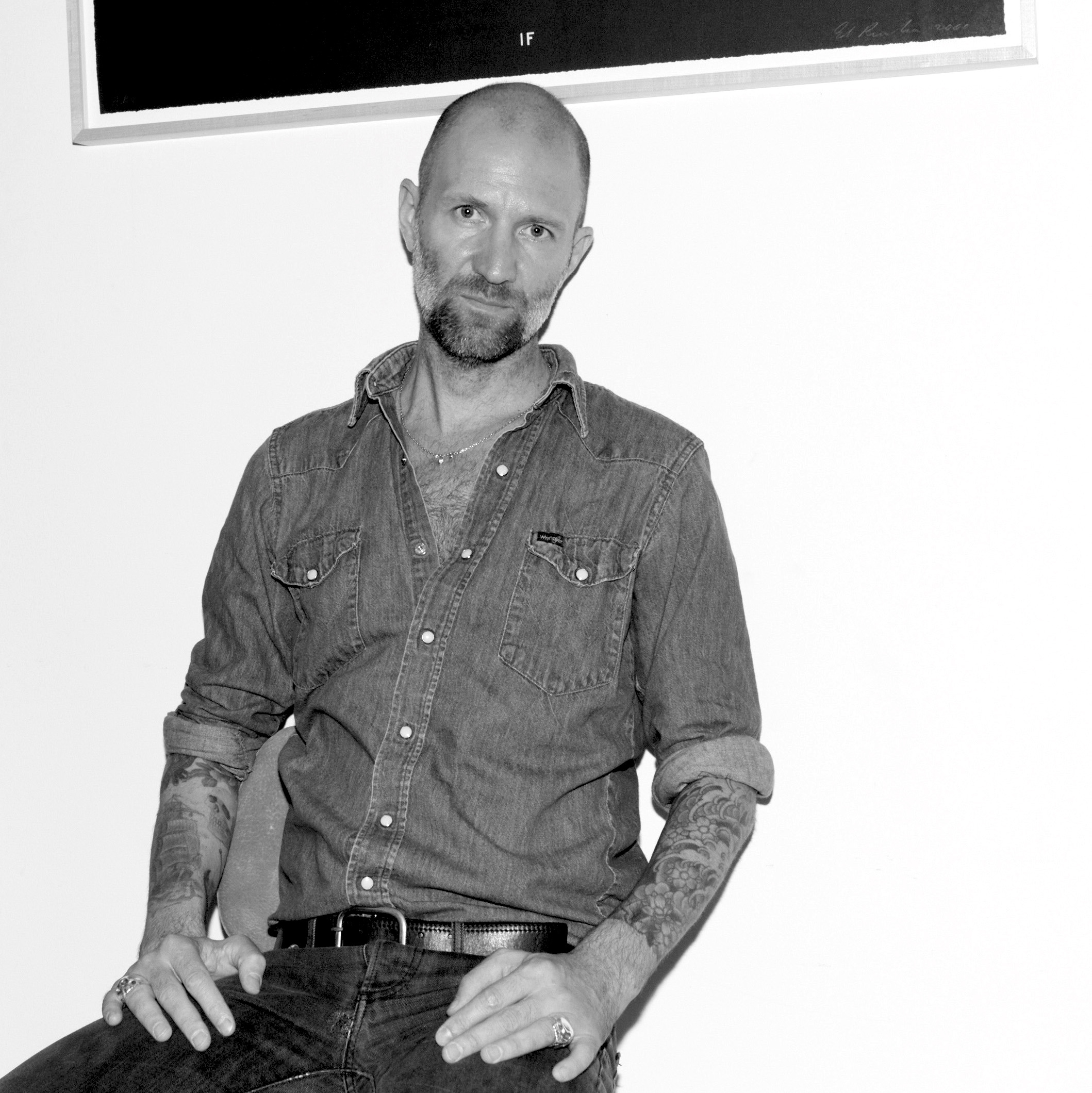





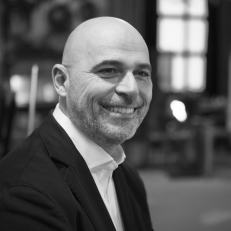


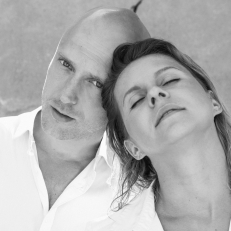
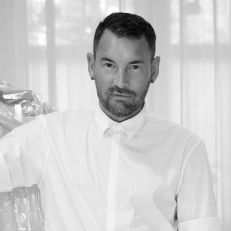
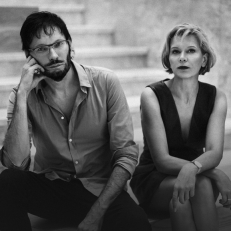
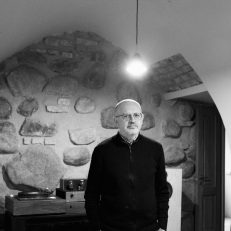
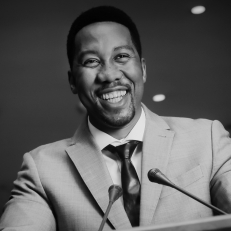


Add a comment